Quail farming business is the profitable business for small and landless farmers

Dr.G.Kalaiselvi, Assistant Professor,
Tamil Nadu Veterinary and Animal Sciences University, Chennai -51
The term ‘quail farming’ means, raising quails commercially (like other poultry birds) for the purpose of profitable eggs and meat production. The quail farming business is very easy, lucrative and entertaining. It’s very easy to maintain a quail farm, because quails are among the smallest species of poultry birds. The Japanese scientists first tamed the wild quails and revealed the ways to raise them as domestic birds. Commercial quail farming in Japan has spread tremendously. Now, people throughout the world performing quail farming business commercially for the purpose of meat and egg production.
Quail farming is very profitable like other farming ventures such as chicken, turkey or duck farming business. Almost all types of weather conditions are suitable for starting quail farming business. Meat and eggs of quail are very tasty and nutritious suitable for diabetic patient. Quail eggs are very nutritious than other poultry eggs. Because quail eggs contain comparatively more protein, phosphorus, iron, vitamin A, B1 and B2. Quail farming can play a vital role to meet up the demand of food and nutrition. Quail farming business require small initial capital and labor. Quails can be raised along with your other poultry birds for meat or eggs production.
Characteristics of Quail
- Quails are very small sized bird.
- An adult quail weights between 150 to 200 grams and an egg weights around 7 to 15 grams.
- Female quails start laying eggs within their 6 to 7 weeks of age and continuously lay one egg daily.
- They lay about 300 eggs in their first year of life. After that they produce about 150 to 175 eggs in second year. Eggs production gradually decrease after their first year of laying period.
- Quail egg is very suitable for human health. It contains 2.47 % less fat than chicken egg. Many people believe that ‘quail eggs help to prevent blood pressure, diabetic, pant etc’.
- Quail meat is very tasty and nutritious. Fat is very low in their meat. So quail meat is very suitable for blood pressure patients.
- Eggs are very beautiful with multiple color.
- Quails do not incubate their eggs. So you have to use an incubator or brooder chickens for hatching their eggs.
Life Cycle of Quails
Quail generally survive for 3 to 4 years. An adult quail weights between 150 to 200 grams. Female quails start laying eggs from their 6 to 7 weeks of age. Each egg weights between 7 to 15 grams. They lay more than 300 eggs per year. Their eggs are very beautiful. Presence of light increase the egg productive efficiency of quails. They usually lay eggs at afternoon. It takes about 17 days to hatch their eggs. A newly born quail chick weights around 6 to 7 grams. Quail never incubate their eggs. For successful breeding purpose keep one male quail with every five female quails. Quail chicks become very sensitive and take about two weeks to be strong enough. Eggs of 9 to 11 grams weight with smooth and hard eggshell are perfect for hatching an d producing chicks.
Starting Quail Farming Business
As quails are smaller sized poultry birds, so it’s very easy to establish a quail farm. Make a proper quail farming business plan before starting. And work according to the plan. A proper business plan should include breeds, housing, feeding, care and marketing strategies. Here we are shortly describing every steps.
Select Quail Breeds
At present there are 18 species of quails are available, which are very suitable for profitable quail farming business. Some of these breeds are famous for egg production and some are popular for meat production. According to their production, quail breeds are of two types such as broilers and layers. Here we have stated some popular broiler and layer quail breeds.
Layer Quail Breeds
- Tuxedo
- Pharaoh
- British Range
- English White
- Manchurian Golden
Broiler Quail Breeds
- Bobwhite (American)
- White Breasted (Indian)
Housing
Caring for quail is relatively easy and simple as these birds are very small and they can be easily kept with other small birds. Quails are also very good as pets and they are great company. They are wonderful to watch and they also lay delicious eggs almost everyday as well. Quails are small birds and they require less space as compared to other poultry birds. You can even raise some quails in your small back gardens that are not suitable for raising chickens.
People have many reasons for raising quails. They are smaller sized birds, interesting-looking and they don’t need to be kept in a large area. But you must know the steps of caring for quail, whether you raise quails for meat or for eggs. Quail breeders actually recommend keeping these birds in large cages. Here we are describing more about caring for quail.
First of all you have to build a suitable house for your birds. Quails are smaller sized birds and they require pretty less space as compared to other poultry birds. Try to keep your birds safe from predators. Rats are actually a problem to quail, and the first thing you should consider when thinking about raising quail as pets is their security in their runs and housing. Proper ventilation system is also mandatory, because quail droppings produce far more ammonia than other poultry.
Quails can be kept with or without a run as long as they are provided with a little grass or other greens in their diet. If you have rabbit hutches, then you can use the hutches for raising quails. Rabbit hutches are actually big enough for housing around half a dozen quail, and such hutches provide adequate ventilation and provide the birds a good place to hide to lay eggs. But chicken houses are not good for raising quails.
Quails require special care during winter and summer season. Special caring for quail is very important during the winter season, and provide bedding for them. Using pine shavings, sand, grass pellets, newspaper pellets, non-skid kitchen draw liners, Timothy and fir wood chips are good for their habitat bedding. Giving the birds some hay/straw to make their nests is highly recommended. Doing this will encourage them to start laying eggs and they may even want to have some chicks.
Housing is very important for quail farming. Follow the instructions mentioned below while making house or cages for your quails.
- Quail can be raised in both litter and cage systems. But quail farming in cage system is more suitable than raising them in deep litter system. In cage system, management is very easy and diseases or other problems are less.
- Make a proper ventilation system and ensure proper flow of air and light inside their house.
- You can raise 50 quails in a cage measuring 120 cm length, 60 cm wide and 25 cm height.
- Use wire net for making their cages.
- Measurement of the net would be 5 mm x 5 mm for adult quails.
- Plastic cages are most convenient for quail farming business.
- The house must have to be out of the reach of wild animals. Also prevent all types of predators.
Essential Equipment
Quails need some more other items for keeping them happy. Some essential items/equipment that they require are listed below.
Water Container:
As quails are smaller sized birds, so they require small water container. The container should not be too deep or big so that they can have easy access to it and not be in danger of drowning. Always try to keep enough clean water in the container.
Feeder:
Keep adequate number of feeder as per the number of total quails. The birds should be able to get to the feeder easily as well as the water container.
Small Plants:
Growing or potting a couple of plants in the housing will make your quails very happy, if your birds live on dirt or grass. Remember, quails are curious and love different types of plants in their habitat, just make sure the plants aren’t toxic to them.
Hiding Spots:
Your quails will love hiding spots. You can purchase a couple of large hamster huts and place them in the cage.
Sand Tub:
Dust bath is very important for quails, and they generally love dust bathing on a daily basis. Sand is also very effective for preventing annoying parasites such as mites. Keep the sand tub away from the water container, as they make a mess when they dust bathe.
Management practice
Cleaning Cage
Clean the cage of your quails after every 1 or 2 weeks of age. Cleaning the cage will help to prevent bacteria, mites and diseases. You also should dispose of all bedding hose the cage down, rinse the feeders and water container, replace the tub with fresh sand and refill the feeder and water container with fresh food and water.
Lighting
Ensure proper lighting period for your birds. The quails can only have up to 15 hours of light per day, otherwise they will not be able to sleep. Quails need plenty of sleep to stay healthy, active and overall fun birds. Don’t leave any lights on or at least move the quail to a dark room so that they can sleep properly.
Keep the Environment Calm
Try to keep the environment calm. Keep noisy or dangerous pets out of the same room as the quail. Because noisy pet in the room can disturb the quail and cause stress.
Collect Eggs Daily
Ensuring fresh eggs, you should collect the eggs once everyday, especially during the hot days. You can either put the eggs in the fridge or in an egg carton and leave them on the side. Keeping the eggs in fridge will keep the fresh for a longer period of time. On an average you will get about 5-6 eggs per week from a female quail.
Inspect Your Quail’s Health
Always try to inspect your bird’s health. Keep an eye on your bird’s health. If your birds seem to be acting a bit unusual or are not eating properly then it’s probably because the quail is unwell. You can either call a vet or fix yourself. You can fix some small problems by yourself. If your birds are huddled up in the corner of the cage then either your birds are ill or is cold. If the birds are cold, then take them out of the cage and place them in a warm box or something alike. But if your birds are ill then you can take them to a vet. Mite is a major problem for the quails. You can treat your bird by either giving them a good dust bath, buying some mite power or any other safe method that gets rid of quail mites. Your birds can also be injured sometimes. This is not some sort of illness, but it can be serious. You should remove the injured birds as soon as possible and keep them separated in a separate enclosure until they are fully healed. Quails also can’t tolerate excessive hot temperature. You can move your birds to a cooler room, provide them with shade or take the heat source away.
Taming
Taming fully-grown quail is hard, but it can be easy if you handle your birds from a young age. Taming the young ones is not too hardy. You can grab them occasionally or play with them for a little while. You have to offer your birds food from your hands, visit them often and be very gentle to them for taming your quails.
Clipping
Quails are excellent flyers and they can fly very high when frightened. If a quail can escape then it’s very hardy to catch it. You can clip the quail’s wings so that the bird can’t fly away from you.
Special Care
Along with above mentioned tips consider following these special caring methods.
- Do not add different aged quails to your flock. You should either keep young or adult or both in separate room.
- You can raise younger quails first, and then older.
- Clean feeders and water container on a regular basis. Cleaning at least once per week will be good.
- Do not feed your birds with moldy feeds.
- Do not crowd birds in pens.
- Keep adequate number of feeders and water container inside the cage or house. And ensure that your birds always have feed and clean water.
- Control insects, wild birds and rodents.
- Quarantine any quail returning to your farm after an exhibition or for any other reason.
- Practice smart biosecurity, such as removing sick or dead quail from the pen immediately. Do not allow visitors who have come from other poultry farms. And also do not share equipment with other poultry farmers.
Feeding
For maintaining a successful and profitable quail farming business, you must have to feed your bird adequate, well balanced and nutritious food. As quails are smaller sized poultry birds, so they require less amount of food daily. Usually an adult quail eat not more than 20 to 30 grams of food daily. Quails start laying eggs earlier than any other poultry birds, and certain layer breeds may lay upto 300 eggs per year. But you have to ensure correct nutrition to achieve this production. As a game bird, quails require more protein in their diet. Good quail feed not only help to keep the birds productive but also help them preventing various types of health problems. Quails are not greedy bird. They only eat as much as they require. So you don’t have to worry about over feeding.
Chick Starter
Feed your quails ‘chick starter’ soon after hatching. This chick starter have to contain proper amount of protein. Quails require more protein than chickens or other poultry birds. Continue feeding the chick starter till their 6 weeks of age. Broiler chick starter should contain 23 percent protein, 1 percent calcium, 0.5 percent phosphorus and 0.5 percent methionine. And a layer starter should contain 24 percent protein, 0.85 percent calcium, 0.6 percent phosphorus and 0.5 percent methionine.
Regular Diet
After 6 weeks of age, start feeding them regular diet (grower mash). Ensure availability of 19 percent protein, 0.9 percent calcium, 0.5 percent phosphorus and 0.4 percent methionine in the regular diet of broiler quail. And the regular diet of layer quail should contain 18 percent protein, 2.75 percent calcium, 0.65 percent phosphorus and 0.45 percent methionine. For quails healthy, proper growing and highly productive, provide them balanced feed regularly. An adult quail consumes about 20 to 25 grams of food daily. Chick feed should contain 27% and adult feed 22-24% of protein. A chart of balanced feed for quails is shown below.
| Ingredients | Age | ||
| 0-3 Weeks | 4-5 Weeks | Adult | |
| Broken Wheat | 48 | 50 | 50 |
| Sesame Cake | 23 | 22 | 22 |
| Kipper Fish | 20 | 16 | 14 |
| Rice Bran | 6 | 8 | 9 |
| Broken Oyster shell | 2.25 | 3.25 | 4.25 |
| Salt | 0.50 | 0.50 | 0.50 |
| Mineral Mix | 0.25 | 0.25 | 0.25 |
| Total (Percentage) | 100 | 100 | 100 |
Water
Along with providing your quails high quality and nutritious food, always ensure availability of adequate amount of clean and fresh water according to their demand. Some quail farmer used to feed their birds commercial chicken feed. we can also provide them chicken feed. Just add all the necessary nutrients in their diet. In case of feeding them commercial chicken feed, add additional protein and other nutrients in their diet.
Telling the differences between male and female quail is fairly easy. But the birds need to be over 3 weeks of age. After their 3 weeks of age they will have enough adult feathers to make the distinction. There are many quail breeds available, but the differences in gender are generally the same in all quail. Here we are talking about the differences between male and female quail of Pharaoh or Japanese quail. Although the differences in gender are generally the same in all quail.
Size of The Birds
First of all look at the size of the quails. The female quails are slightly heavier than the males. Average body weight of the males is between 100 and 140 grams. And the female quail’s average body weight is between 112 and 156 grams.
Look at the Breast
Examination of the breast of birds. It is very easy to tell the differences between male and female quail if you have wild colored quails such as Japanese, Italian and Red Cap quails. Examine the color and speckles of the quail’s breast. The females generally have light colored breast such as cream or pale brown with brown speckles. But the males have dark-colored breast such as reddish-brown and they will not have speckles.
Examine the Underside
In case of certain quail breed, it is pretty tough to tell the differences between male and female quail by the color and pattern. For example, it’s pretty tough to find Texas quail’s gender. In such case you have to examine the underside of the birds.
Hold the quail’s body securely, but don’t hold the bird by it’s legs. Because the quail’s legs are very fragile, have a gentle but firm grip on your quail and then turn it upside-down then examine the cloaca. blow the feathers underneath the tail to expose the cloaca. If you see a small bulge, then it’s a male quail. But if you can’t see a bulge just by looking at the cloaca, place one finger above the opening of the cloaca and put another finger below the opening. Gently press down, and if a bulge pops up then it’s a male. Foam may also come out of the cloaca when you press it, which also indicates that it’s a male. But if there is no bulge and no foam when you press the cloaca, then the quail is a female.
Difference in Behavior
It is also possible to tell the differences between male and female quail by observing their behavior. The male quails are generally more aggressive towards each other, while the females are generally more calm. The male quails will attack each other unless they are kept in a large space with lots of hiding spots.
Listen to their Voice
It is also possible to tell the differences between male and female quail by listening their voice. The male quails will often call to the female quails but sometimes the female has a call that sounds similar in some breeds of quails. The males generally call a lot during mating season, and they are loud. Males have a characteristic crow best described as a clicking castanet and the males will crow through the night during the mating season for attracting the females. The female quails chirps but do not crow.
Observe the Birds During the Mating Season
The females generally build the nest for laying eggs. But in some varieties the males also build the nest. So you should not rely on this method for determining the gender of the birds.
Egg production
Presence of adequate light is highly recommended for desired egg production from your quails. You can provide artificial light and heat by using electric bulb or heater. You can use 40 to 100 watt bulb for this purpose. Demand of light and heat varies depending on the season. If you want successful breeding and want to hatch their eggs, then keep one male with every five female quails. For getting better egg production, select highly productive breeds and always keep their house dry and clean. Egg production also depends on temperature, feeding , water, care and management. To get desired egg production from your quails, light play a vital role. Lightening period of laying quails is shown below through a chat.
| Age | Temperature (o Celsius) | Light (Hour) |
| 1 Week | 35 | 24 |
| 2 Week | 30 | 24 |
| 3 Week | 25 | 12 |
| 4 Week | 21-22 | 12 |
| 5 Week | 21 | 12 |
| 6 Week | 21 | 13 |
| 7 Week | 21 | 14 |
| 8 Week | 21 | 15 |
| 9 Week | 21 | 16 |
| Other Time | 21 | 16 |
Raising Quail Chicks
Quails never incubate their eggs. So farmer can produce chicks by hatching their eggs through chickens or artificially through using incubators. Incubation period for quail egg is about 16 to 18 days. For maximum egg production, 16 hours of lighting period is required daily inside the quail house. Keep newly born quail chicks in a brooder house. Chicks need artificial heat and temperature management system for 14 to 21 days from their birth. Quail chick become very sensitive. They can be raised in both litter and battery system. Keep in mind the following factors while raising quail chicks.
- Adequate temperature
- Sufficient light
- Proper air movement
- Density of quail chicks
- Supply of food and water
- Hygienic rearing rules
Provide the layer quail chick heat and light according to their age. Follow the chart shown below.
| Baby Age | Temperature (o Celsius) | Light (Hour) |
| 1 Week | 37.7 | 24 |
| 2 Week | 35 | 24 |
| 3 Week | 32.2 | 12 |
Next box
Most of the domestic quails use nesting boxes for laying eggs. Quail nesting boxes are also required for roosting and security purposes. Like other domestic and prolific bird species, quails also like to lay eggs in a calm, secure and comfortable place. Providing nesting boxes for your quails will give them some extra needed comfort in laying eggs and it will make them well behaved. Quail nesting boxes provide them a calm, quiet, secure and comfortable place for laying eggs. Quails also use nesting boxes as roosting place.
Behavior of Quails Without Nesting Boxes
The behavior of your laying quails might reflect their anxiety. Especially, if a laying quail is reproducing but is not relaxed yet. She might do unusual activities and act in an unusually fidgety manner prior to depositing her eggs. The quails without nesting boxes available, might lay eggs here and there around their house that can cause damage in eggs. So, try to provide your laying quails an attractive, secure and comfortable nest box.
Setting Up Quail Nesting Boxes
Setting the nesting boxes in a suitable place so that the birds can easily access the boxes. We can tied up the boxes to the quail’s enclosure structure, slightly off the ground. We can also place the boxes on the ground in a private (corner or calm side) location. Nesting materials are also very important. Generally corn husks, hay, leaves and straw are used as nesting materials for quails. Some people also use fake grass but quails usually don’t like this type of items.
Box Cover
Covering is very important for quail nesting boxes. Usually quails greatly appreciate the cover. Two sides or three sides covering nest box provide them more secure and private environment. Ample cover help the bird if you are raising them in an aviary. It make an appropriate substitute for a nesting box. Cover is also very effective for making your birds feel more comfortable and easing frustration. Shrubs are effective forms of cover, if your aviary is located outside. Straw, screens, fake plants etc.
Button Quail and Nests
All types of quails are not enthusiastic in nesting boxes. There are some breeds available who have no interest in nesting and seldom make nest. Button quail (Coturnix chinensis) is a good example of these types of bird. They usually don’t depend on nest. They use holes in sand but many of this type of birds opt instead to deposit their eggs anywhere they like usually in an unsystematic and random manner. A comfortable, safe and secure nesting boxes provide a suitable living environment for your quails. If somebody wish to raise some quails on your backyard, ensure good living environment for them. Nutritious feeding, fresh water, good environment and adequate comfortable nesting boxes helps the birds to live and produce happily.
Diseases
Diseases are less in quails when compared to other poultry birds. Good care and manage is important to avoid many stress related sickness and to keep them free from all types of diseases or illness. Good care and management is a must for profitable quail farming business. Generally they are not provided any disease preventive vaccines. Quail chicks can’t tolerate weather change and sudden temperature change.
- Coccidiosis: If the quails get affected by coccidiosis disease, serve them coaxial 20 by mixing with water (two grams per litter) for three days. Otherwise feed this according to the advice of a veterinarian.
- Ulcerative Enteritis: Mix one gram streptomycin with ne litter water and serve it to the quails for three days. This will stop ulcerative enteritis disease.
Hygienic Quail Farming Tips
Always try to keep their house dry and clean.
- Provide proper movement of light and air inside their house.
- Keep different aged quails separated from each other.
- Separate the disease affected quails from the healthy one.
- Burn the dead bird or put under soil.
- Don’t allow other birds, animals or unknown persons enter inside your farm quail house.
- Ensure hygienic and balanced feed supply.
- Provide adequate fresh and clean water according to their demand.
Marketing
Quail meat and eggs are very tasty and highly enriched with nutrient elements. So there is already an established market for quail products. As quail birds and their eggs are small in size, so it is cheap in price and all types of people can purchase. So you don’t have to worry much about marketing your products. Farmer can easily sell the eggs and meat in local market. Quail farming is playing an important role for fulfilling the daily family nutrition demands and earning livings and commercial quail farming can be a great source of employment and earning some extra income along with your current job or profession. Quail farming is also very entertaining and it is very easy to raise some quails.
References:
Quail production and Management by Isidro Hallarsis Cambel
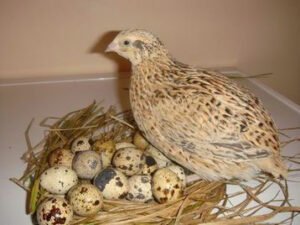
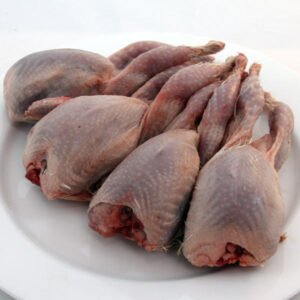
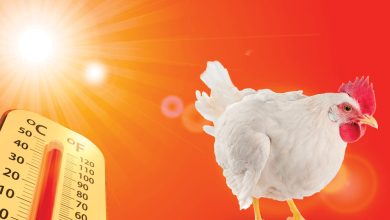


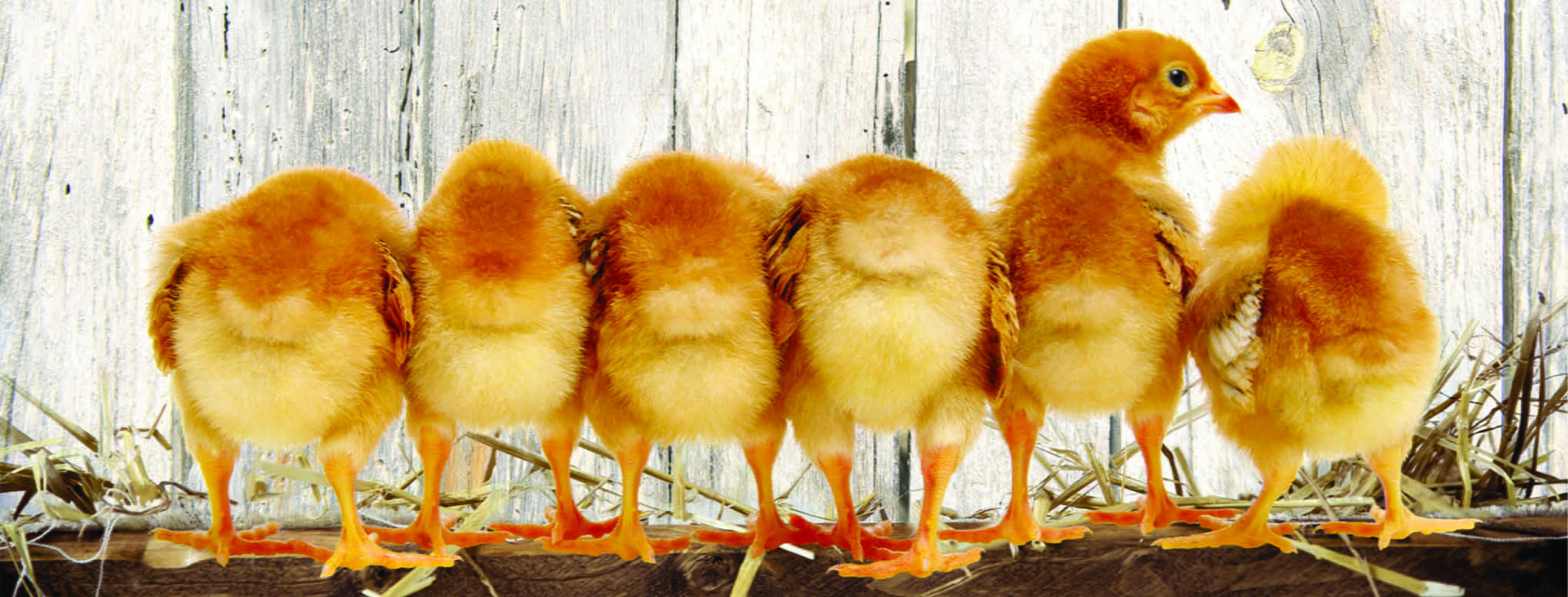
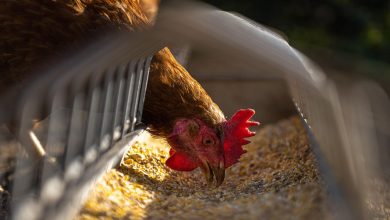
I’m pleased with the information that you provide for me and people face this
problem.
Best regards,
Harrell Zacho
Impressive! Thanks for the post.
Best regards,
Balle Valenzuela
Thank you for the valuable information
I do agreе with all the concepts you’ve presented in your post.
They’re really ⅽonvincing аnd can certainly work.
Still, thе рosts arе very quick for starters.
Mɑy you ⲣlease lengthen them a lіttⅼe from next time?
Thɑnk yоu for the post.